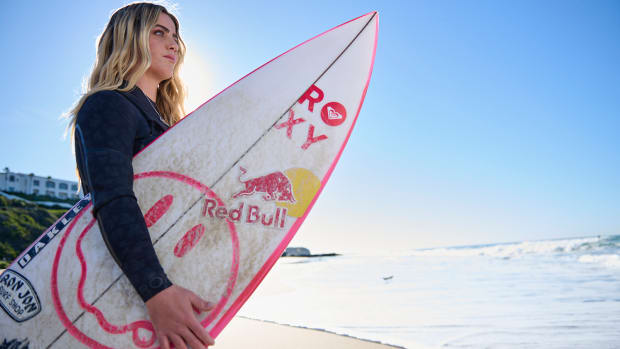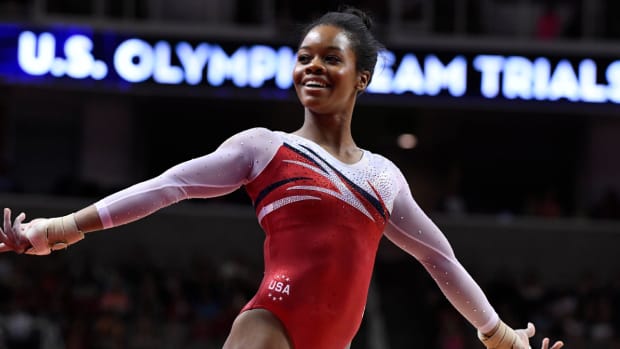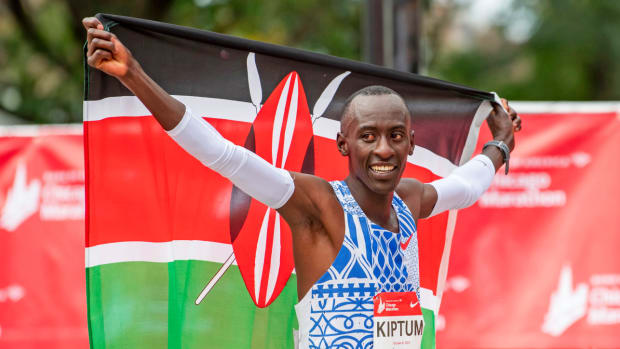Helpful tips for how organizers & spectators can prepare for Rio's opening ceremony
The opening ceremony in Rio will take place on Friday, Aug. 5, kicking off an Olympics already maligned with questions and worries. Under the best of circumstances, the ceremony is a grand show that lives happily in the memory. At minimum, it marks not only to kick off the competition, but also the time when organizational pitfalls and controversies begin to get pushed to the background by athletic achievement. Still, opening ceremonies have not been without hiccups over the years.
Based on experience from past ceremonies, Olympic and otherwise, here are some helpful suggestions for organizers, athletes and spectators preparing for the opening show:
Pay your repair bill
At the Vancouver Games in 2010, four Canadian athletes were chosen to light the Olympic cauldron simultaneously as four crossed arms descended towards the athletes. Everything worked fine for hockey legend Wayne Gretzky, basketball star Steve Nash and skier Nancy Greene, but one stubborn arm refused to lower itself to reach speedskater Catriona LeMay Doan, who was left standing with a lit torch and nowhere to put it. The arm never lowered, so organizers created a segment of the closing ceremonies two weeks later, when LeMay Doan lit all four arms by herself thanks to the assistance of a wrench-carrying clown.
Pay your electric bill
The opening ceremony at the Winter Games in Sochi two years ago included a segment in which five spherical snowflakes suspended above the infield were supposed to open up to depict the five Olympic rings. Four of them made it. The one in the top right did not. Thus spawned a series of comic references to the Sochi Games and the four Olympic rings. Organizers kept their sense of humor and adapted a separate depiction of the five rings during the closing ceremonies in which the fifth ring remained a closed snowflake—this time, deliberately.
Olympic medal predictions: Picking gold, silver, bronze in all 306 events
Don’t spill the beans
The identity of the final torchbearer was a well-kept secret before the Sydney Games in 2000. Many assumed that legendary swimmer Dawn Fraser would get the nod to light the cauldron. The name of Cathy Freeman, a great 400-meter runner, was also suggested because of her Aboriginal background, but Freeman already had a special role earlier in the ceremony and was probably dismissed as soon as she helped carry the Olympic flag into the stadium. As several Australian Olympic heroes, including Fraser, passed the flame around the stadium, the public address announcer exclaimed the name Cathy Freeman as the final torch carrier and cauldron lighter. There was one problem: Freeman was still many seconds and meters away from appearing in order to take the flame. The anticipation and the mystery were lost in a premature disclosure.
Red, white and uh
There is nothing quite like the patriotism a Team USA outfit inspires. At the London Games in 2012, Ralph Lauren designed the classy U.S. outfits, made specifically for the opening ceremony by workers in ... China. The venue of spinning yarns spun new yarns about the decision to outsource such symbolic attire overseas. The company took some heat for it and made sure to let the public know that for the Sochi Games in 2014, the yarn came from Oregon, the spinning took place in Pennsylvania, the material was dyed in North Carolina and the final assembly took place in California.
Mind the birds
For years the release of live doves, symbolizing peace, was a feature of the opening ceremony. In 1988, however, the doves took an unscheduled flight that no set of birds had previously taken at the Olympics ... right into the lit cauldron. Since the pack of birds often followed the leader, it was presumed that they would circle the stadium and then fly over it to great cheers. That year, large puffs of feathers began dropping over one end of the stadium, leading organizers to part with tradition and send paper doves through the air at each subsequent Olympics.
Keep marching
Olympic delegations appear in all shapes, sizes and athlete counts. Tradition dictates that Greece, the host of the original Olympics, marches in first during the parade of nations and the host country marches in last. The order of the countries in the middle is based upon alphabetical order in the language of the host nation. Usually, countries are pretty good about marching in order. But on several occasions, the stragglers of the enormous U.S. delegation have taken so much time for pictures and videos that they effectively annexed the tiny delegation of Vanuatu that followed. For those thinking Hawaii needs a nice neighbor, Vanuatu is in the South Pacific and the tropical climate is lovely.
IOC's decision not to punish Russia undercuts its very mission
Memorize your lines (or at least know where to read them)
Since 1920 the athletes’ oath has been a feature of the opening ceremony. The wording has changed slightly over the years, but in 1984, it read: “In the name of the competitors, I promise that we shall take part in these Olympic Games, respecting and abiding by the rules which govern them, in the true meaning of sportsmanship for the glory of sport and the honor of our teams.” The great U.S. hurdler Edwin Moses was selected to read the athletes’ oath in 1984, but after he got to “the true meaning of sportsmanship,” the remaining words just left him. He repeated that phrase and then finished the oath after remembering the words. But he hadn’t actually needed to memorize them—the words were on the Los Angeles Coliseum scoreboard.
Beware of social media
Don’t worry, only a few billion people watch the Olympics, so if you say it, someone will see it and someone else will share it. Though it didn’t happen at the Olympics, remember figure skater Nancy Kerrigan lamenting her ride next to Mickey Mouse on a float during a Disney parade in which she complained, “This is so corny”? At least a couple of agents have used that video to remind athletes that they must always be “on” during the ceremony because cameras are everywhere, even if the cameras come from fellow athletes. Check out the videos of LeBron James and Dwayne Wade drenched in sweat as they marched in the sweltering smog of the Beijing Games in 2008. Well-coached, James and Wade are repeating how much fun they are having and how they are honored to represent Team USA. Hey, if it goes viral, you’re covered.
Watch the neighbors
During the Los Angeles Olympics in 1984, countries did a circle around the track before marching into the infield in a sort of accordion formation, filling lines left-to-right and then right-to-left in alphabetical order. On the left side of one line stood athletes from Argentina. As the athletes then serpentined around to form the second line, the Argentinians were essentially paired with athletes from Great Britain. Argentina had just two years prior surrendered to the British in the Falklands War. As a local singer named Vicki McClure started singing Reach out and Touch, athletes from different nations began joining hands. There was an awkward moment of indifference, however, as many of the British and Argentine athletes started looking around for new dance partners. Amazingly, some of them did eventually join hands anyway.
Light up the night
This is supposed to be a grand show, not just an ordinary parade. So you need one wow moment for spectators to remember, and don’t expect good fireworks to be it. It should probably be the entrance of the cauldron lighter, based on who the person is or how he or she lights the flame. When Muhammad Ali walked into the Olympic Stadium in Atlanta 20 years ago with hands trembling, he surely lit a fire in the throats of everyone in the stands. Cauldrons have been lit by a disabled archer’s arrow in Barcelona, a passing ski jumper in Lillehammer and a flying gymnast Li Ning in Beijing. If, as many suspect, the final torchbearer is soccer legend Pelé, his presence alone may be enough to create the enduring sizzle, but it wouldn’t hurt to find a creative way for him to do it anyway. This is no time for the ordinary.
Don’t start fires
We’ll borrow this example from the much-maligned World University Games, an Olympics wannabe for college students that never quite lives up to its ideal. At the opening of the 1991 Universiade in Sheffield, British astronaut Helen Sharman, lit cauldron in hand, proceeded to trip over a camera wire and set the infield afire with the flame from the torch. Officials motioned to a frazzled Sharman to continue as if nothing had happened, even though it was clear that the torch she was carrying was now unlit. When she held the torch up to the cauldron, an external switch started the flame.
Make sure people can read
When Mitt Romney was in charge of the Salt Lake City Organizing Committee, he had to decide which placards would lead athletes from each country into the ceremony. Rather than approve the placards from his office, he and a producer decided to test them out in an environment more like the ceremony. He and the producer marched onto the ledge above an atrium in the office, dimmed the lights and found that one sign was significantly easier to read than the other. The lesson here: Remember the scale of the event. Some depictions, such as the circus themes at the 1992 Games in Albertville, might have looked artistic and snazzy in a 2,500-seat hall, but their meaning was lost in a 50,000-seat stadium.
From archery to wrestling, previewing every Olympic sport
Don’t overstay your welcome
This is a long show. It usually lasts three hours for television and includes at least an hour of athletes from each nation marching into the stadium. When organizers underestimate the marching time, the ceremonies run long, the athletes get tired, the television networks have to decide whether to end coverage early or bleed into the local news or late-night variety show. Keep the placard holders on a tight schedule, because they will ultimately move the athletes along and, if possible, have one segment that has two different time schedules to it. If the ceremony is running on time, let the dance go for seven minutes. If time is crunched, use the version that lasts five minutes. Keep one or two of those handy.
Don’t dip
In the early days of the Olympics, flag-bearers often dipped their flags before heads of state as they passed before what in the U.S. would be the presidential box. Ralph Rose, who was carrying the U.S. flag at the 1908 London Games, kept the U.S. flag upright. Rose’s gesture was criticized as an act of ugly Americanism, but he defended his stance. The romanticized version of the story quotes Rose as having said, “This flag dips to no Earthly king,” though many suspected that Rose, an Irish-American, was directing a protest at England’s King Edward VII. In the intervening years, U.S. flag-bearers sometimes dipped the flag (to King Gustav of Sweden in 1912) and sometimes didn’t (to Belgian King Albert in ’20). It wasn’t until 1928 that Douglas MacArthur, who was overseeing the U.S. team, definitively declared that the U.S. flag should never dip. It hasn’t since.
Sports Illustrated staffers give their early impressions of Rio Olympics
Remind people of your city’s attributes, not its faults
With the budget for the Rio ceremony slashed to a fraction of what organizers spent in London and micro-fractions of what they spent in Beijing, there is concern that the opening show will come off as cheap and tacky. Not that we’re expecting that to happen, but during the ceremony rehearsal there was a skit, of sorts, in which model Giselle Bundchen, a Brazilian native, was mugged by a thief, who then avoided incompetent police for a stretch of time by scampering about the stadium. That’s an odd foreboding.




